The Xiaomi Mi9 Review: Flagship Performance At a Mid-Range Price
by Andrei Frumusanu on September 13, 2019 9:00 AM EST- Posted in
- Mobile
- Smartphones
- Xiaomi
- Snapdragon 855
- Xiaomi Mi9
Camera - Daylight Evaluation
The Mi9’s camera setup is certainly a key factor for the device. The combination of a triple camera setup at this price range is very uncommon, and Xiaomi historically has had quite good post-processing calibration. It’s also a new vendor amongst the many IMX586 6 implementations we’ve seen this year, giving us another look at how post-processing can differ results of the same hardware.
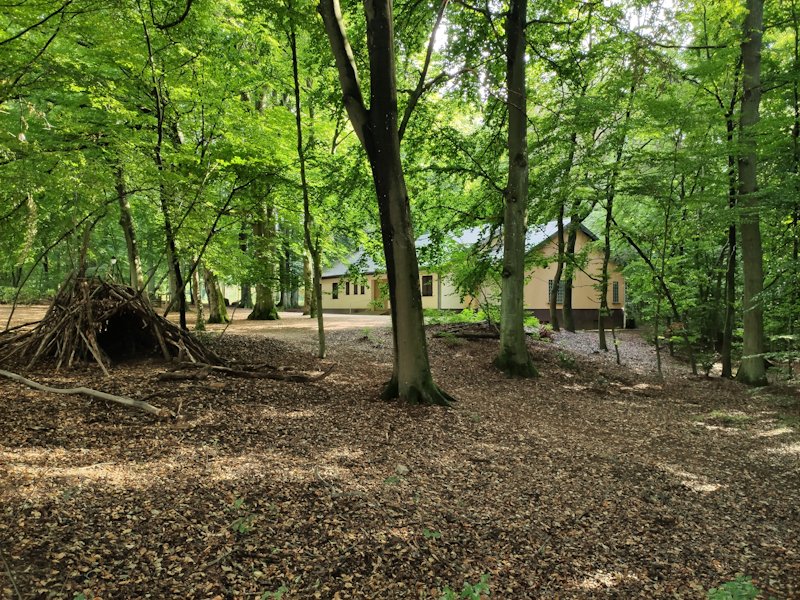
[ Mi9 ] - [ S10+ (E) ] - [ S10+ (S) ]
[ Xperia 1 ] - [ P30 Pro ] - [ Reno 10x ]
[ G8 ] - [ BlackShark 2 ] - [ RedMagic 3 ]
[ Pixel 3 ] - [ iPhone XS ]
In the first shot we see the Mi9 do very well in terms of the exposure. For this comparison I didn’t quite have all the IMX586 phones included, however I think this was probably the best showing of all the devices out there. Xiaomi’s processing still managed to accurately capture the lighting of the scene all without unnaturally darkening shadows or eating up the highlights.
Particularly the colour balance was spot on, another thing I noticed many phones have issues with in this scene. The Mi9 even populates the EXIF of the shot with the correct D55 WB illuminant.
In terms of detail, the Mi9 doesn’t stand out too much, but this was again expected of the camera sensor whose quad-bayer sensor design doesn’t seem to be able to have as quite good spatial resolution and pixel deep trench isolation as classical native bayer sensors.
The wide-angle shot also does very well in terms of exposure and colour-balance. Detail is also relatively strong compared to other wide-angle cameras, but clearly loses to the P30 Pro or Xperia 1. Also note that the wide angle is noticeably narrower than that of the S10 for example.
The telephoto shot is very good again in terms of composition and I don’t have much negative to say about it.
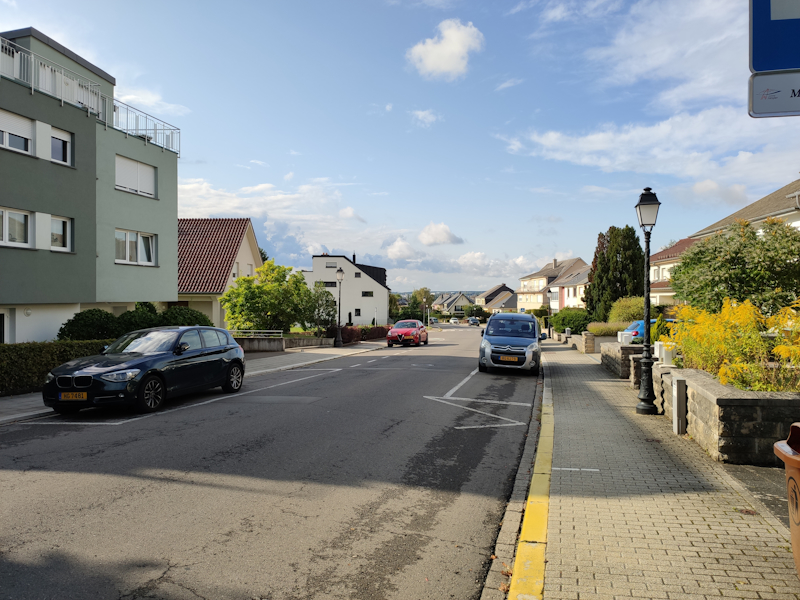
[ Mi9 ] - [ S10+ (E) ] - [ S10+ (S) ]
[ Xperia 1 ] - [ P30 Pro ] - [ Reno 10x ]
[ G8 ] - [ BlackShark 2 ] - [ RedMagic 3 ]
[ Pixel 3 ] - [ iPhone XS ]
In this shot, I think the Mi9’s colour temperature is just a tad too warm, but not too overly off. What’s noticeable here is that the capture is lacking a bit in dynamic range, for example crushing the shadows on the left car far too much, although I can’t say the Reno 10x with the same sensor does any better. Detail-wise, the Mi9 does very well here, avoiding any noticeable noise reduction or sharpening filters.
The wide angle again had a bit too warm colour temperature and this time around I’d also say the exposure is lacking in highlights, avoiding much in the top 10% of levels which results in a bit flatter image. Details for a wide-angle are very good.
The zoom is showcasing similar behaviour, a bit off colour temperature and lacking a bit in the brighter highlights of the scene.
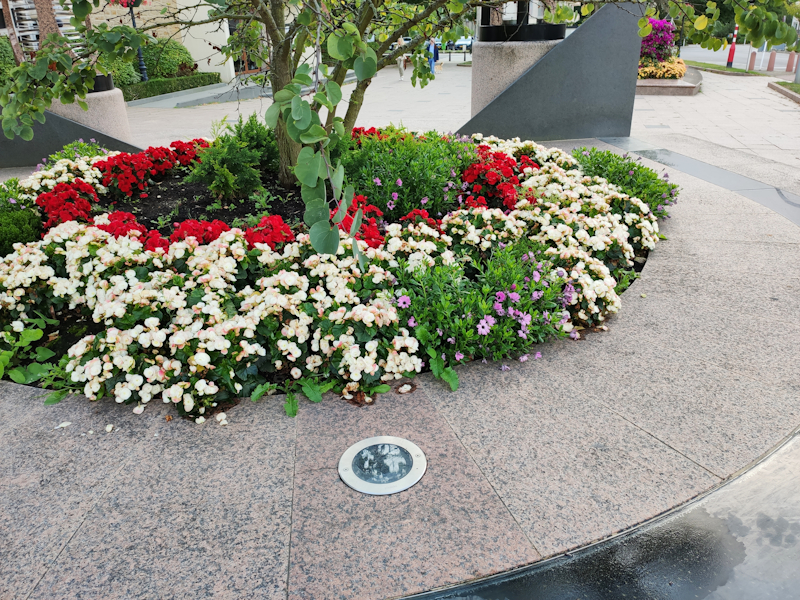
[ Mi9 ] - [ S10+ (E) ] - [ S10+ (S) ]
[ Xperia 1 ] - [ P30 Pro ]
[ Reno 10x ] - [ G8 ] - [ BlackShark 2 ]
[ RedMagic 3 ] - [ Pixel 3 ]
When under cloud cover, the Mi9 seems to also do well in terms of exposure although in this particular scene the flowers look overexposed. The main sensor’s limitations here seem to be solely related to its hardware capabilities, notably lacking behind in sheer dynamic range to be able to capture the petals correctly.
The wide-angle shot is excellent and amongst the best. The reduced viewing angle with the 16MP sensor resolution means the Mi9 gets amongst the most detailed shots among the wide-angle crew. It showcases what the G8 could have been if it didn’t have a post-processing smear filter.
The telephoto here lacks a bit in dynamic range and thus blows out the details of the petals of the flowers.
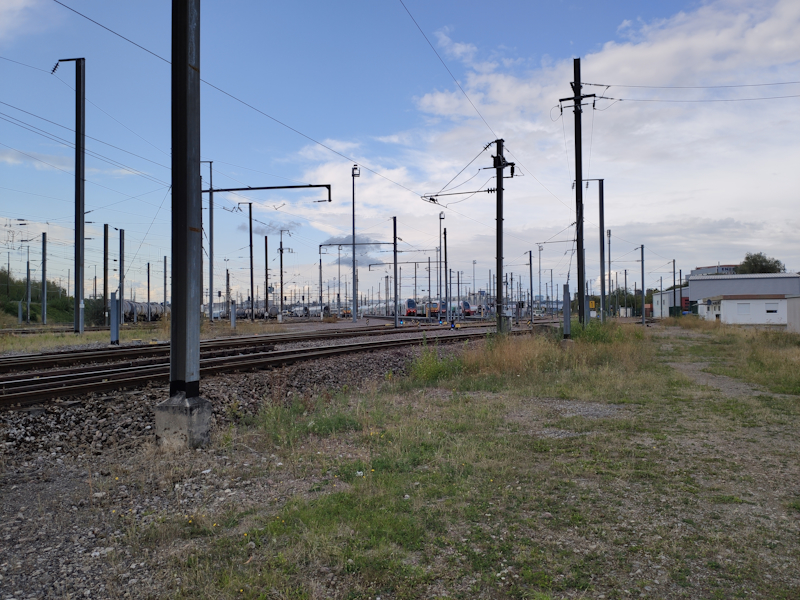
[ Mi9 ] - [ S10+ (E) ] - [ S10+ (S) ]
[ Xperia 1 ] - [ P30 Pro ]
[ Reno 10x ] - [ G8 ] - [ BlackShark 2 ]
[ RedMagic 3 ] - [ Pixel 3 ] [ iPhone XS ]
The next scene was locally overcast, however still showcasing a bright sky in the background. This confused the processing on the Mi9 a bit as the shots between the main and wide-angle weren’t consistent in terms of their exposure, with the wide-angle being far too dark.
The fine power lines against the bright sky also serve as good subjects showcasing some of the HDR/sharpening drawbacks – we see some odd step-wise artefacts on the Mi9’s towards the centre-left lines, with generally some more noticeable brightness halos around the lines. The latter are also extremely pronounced on the Snapdragon S10 so it’s not something unique to the Mi9.
Because of the exposure issue, the wide-angle isn’t very usable in my opinion. The zoom camera is extremely competitive and I can’t see immediate flaws.
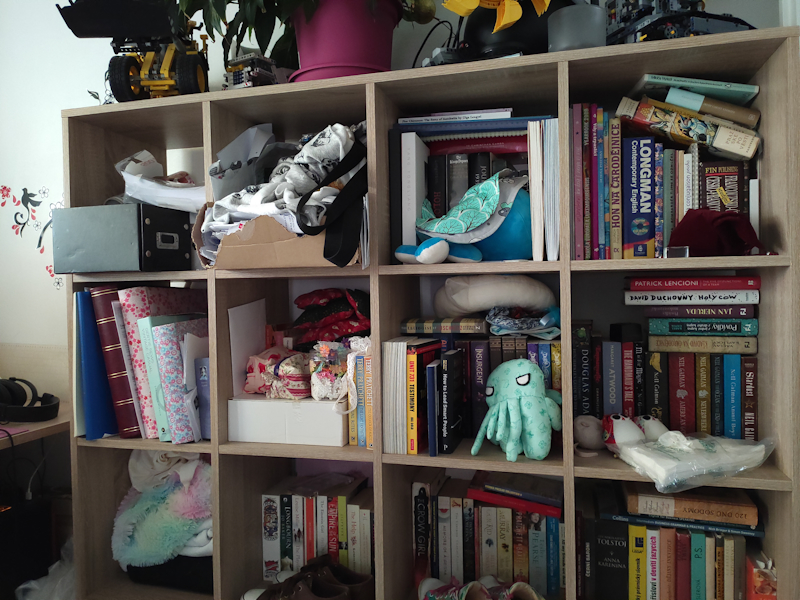
[ Mi9 ] - [ S10+ (E) ] - [ S10+ (S) ] - [ Xperia 1 ] - [ P30 Pro ]
[ Reno 10x ] - [ G8 ] - [ BlackShark 2 ] - [ RedMagic 3 ]
[ Pixel 3 ] - [ iPhone XS ]
Indoors, the Mi9’s main camera sensor is good, but we’re again seeing some hardware limitation of the IMX586 we’ve seen in numerous other phones, such as the reduced dynamic with less details in shadows.
Daylight Camera Conclusion
Overall, I found the cameras on the Mi9 to be very good and also quite competitive. I think this may be the best implementation of the IMX586 in terms of daylight capture results, with Xiaomi traditionally having good calibration resulting in balanced HDR and good colour temperatures. Things weren’t always perfect and there’s shots here and there which were a bit off the mark, but it’s nothing too bad. I think overall, it’s a better main sensor camera experience than the OnePlus 7, both phones being otherwise equal in hardware.
The wide-angle on the Mi9 also was excellent and is above-average in this category. Xiaomi avoids any obvious degrading post-processing and the 16MP thus shines in terms of detail. It wasn’t quite the best in terms of exposure as sometimes it wasn’t consistent with the results that the main camera produced.
Finally, the telephoto was also very good and competitive with good amount of detail, actually achieving some of the best results amongst the 2x optical modules out there. I didn’t see anything particularly wrong here for the Mi9 so it’s a definite positive result.
Overall Xiaomi did a good job on the cameras of the Mi9 – at least in the context of what the sensors are able to achieve.










96 Comments
View All Comments
CityBlue - Sunday, September 15, 2019 - link
"The contents of this article are entirely independent and solely reflect the editorial opinion of AnandTech."Could Anandtech include a similar disclaimer when posting any Intel-related content? Because based on articles over the last few months (or rather, articles that haven't appeared *cough* Zombieload and other security issues *cough*) it does appear that Intel has editorial control over Anandtech articles. And yes Dr Ian, security is bl**dy important to your readership!
It shouldn't be a problem including such a disclaimer if Anandtech is 100% independent, because any such claim would be highly dubious at best.
hanselltc - Friday, September 13, 2019 - link
I am pretty sure you labelled the P30 P30 images wrong Andrei.Andrei Frumusanu - Friday, September 13, 2019 - link
Thanks, I fixed the night shots.Despoiler - Friday, September 13, 2019 - link
I just bought one of these the other week. I was looking at a One Plus 7, but there are so many of the same phone platform made by different companies. I think Xiaomi has the best spec of all the different phones that look like they are build off the same reference design. It's also the cheapest of all of them.The Mi 9 is great given you do two things. 1) Install a different launcher. Apple like app icons across many screens is terrible. App drawer please. I'm using Evie, but really anything is better than stock. 2) Install a Google Camera port like Arnova8G2. The stock camera has a tendency to produce softer pictures than Google's camera. Also Google Night Sight is a better implementation.
s.yu - Saturday, September 14, 2019 - link
All default cameras are worse than Gcam by most measures.eastcoast_pete - Friday, September 13, 2019 - link
Hi Andrei: did you have a chance to also evaluate the video capabilities of the Mi9? I appreciate the details on the still photography, but wonder how the strengths and weaknesses there impact video. If you have the data, would love to see them - Thanks!Andrei Frumusanu - Friday, September 13, 2019 - link
I didn't have time for it today, I'll update it in next few days. The lack of OIS isn't very good for video.NXTwoThou - Friday, September 13, 2019 - link
The EIS for the Mi9 is shockingly good. Unfortunately it only works at 30fps.Redmyth79 - Saturday, September 14, 2019 - link
True but for your info no current flagship has OIS or any stabilization at 4k@60fps. So it's not just the Mi 9Redmyth79 - Friday, September 13, 2019 - link
Read this info on the EIS, it's actually a advanced version of OIShttps://www.gizchina.com/2019/02/17/mi-9-closed-lo...